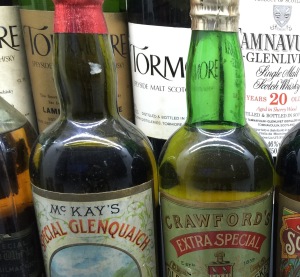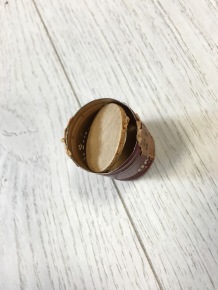Well here it is, another whisky blog. Let’s make it interesting then…. Let’s build a place where everyone can find and share information about the Whisky world, where one can find, on his journey to becoming a real “whisky Connoisseur “, bits of information, while having a dram, impress his friends with his anecdotes. So please feel free to share with all whisky friends what you have learned.
So first up… let’s see…. low level bottles.
There has been a trend lately, we can see it in our online shop, buyers are getting more and more choosey about “low level bottles”, where a bottle was considered low level when it was about a cm or more under the neck line in around 2007 now this has been taken to a whole new “level” and many customers complain of “low level” when the bottle is on or even above the neck line by almost a cm. The reason low level bottles are frowned upon is that alcohol has evaporated during the years of storage. This entails the risk that once Alcohol has reached a very low % level it will not conserve the whisky and the whisky will “rot”. With a level like the bottle on the right this risk is basically zero. Nevertheless as mentioned above many Connoisseurs will not buy it because of wrongly perceiving that the whisky will not be as good.

The bottle on the left should rightly be defined as “low level” because it has lost a significant amount of alcohol, the one on the right is not a low level bottle in my humble opinion, 50 years in glass will do that and evaporate 2cl of liquid, about 2.5% of total volume. This would bring the alcohol Vol % to maybe 44% if the initial Vol was 46% this being pessimistic in the evaluation. So do not be scared if the level has lowered about 2% in so many years it will take as many to make any more damage, and hopefully it will be “used” before then.
Another situation can exist when you see a bottle suddenly dropping in level, this could mean that the cork has dried up (even on metal cap bottles there is a cork disk sealing the top of the metal cap) and in that case if it is a metal cap bottle just gently tighten it, you will notice that you can turn it sometimes even by a third of a turn, this is because during the years the cork dries and becomes thinner, by tightening the metal cap you will once again seal the cap and give many more years of “Life” to your precious bottle.

With cork cap bottles I usually tip the bottle every few months to “wet” the cap so that it has less chance of drying up. Just a few seconds will suffice. Parafilm is also an option although it has to be applied well making sure you warm it up with a hair drier or similar, Parafilm is essentially wax so if you warm it just a bit it will seal any opening, if you warm it too much it will melt and ruin your top.
VERY IMPORTANT: Sometimes we get an email from a customer complaining of a level being different than shown in the photo on the online shop. Understand that temperature has a huge impact on a liquid volume, especially on alcohol. If we have taken the photo of the bottle in August where the temperature in the warehouse was 30° celsius, and we sold the bottle in January with an outside temperature close to 0° the level will change by even 2 cm! Don’t believe me? Try this experiment: take a bottle to a temperature of 30° by warming it up with a hair drier or with a heater, or even by placing it in a sealed plastic bag and dipping it in warm water, mark the level on the bottle, now place it in the fridge first and even in the freezer afterwards and wait for the temperature to drop to almost 0°, now look at the mark, it could have gone from 3 cm inside the neck to just 1 cm! So keep in mind when purchasing a “low level” bottle, what is the temperature around it? Is it winter? If it is your bottle’s level could “grow” by lots in the summer.
STORAGE: Avoid storing your bottles in a “domestic Habitat”,what makes bottles evaporate is not the high temperature, it is the change in temperature. When alcohol heats up, as explained above, it will grow in volume, this will create a huge pressure inside the bottle and pressure means if there is even the tiniest escape route for alcohol it will be pushed through it by this pressure. So store if possible your bottles in a place where temperature changes minimally throughout the year. No pressure means no evaporation.
I hope this helps a bit, please feel free to share your experience and thought on this new blog, let’s all help each other know an enjoy this magic water of life better.


Let’s Go!!!
"Mi piace""Mi piace"
Great stuff!
"Mi piace"Piace a 1 persona
Thx S.
"Mi piace""Mi piace"
Way to go, Diego. Keep it up!
"Mi piace"Piace a 1 persona
Thx My friend
"Mi piace""Mi piace"
very good blog, diego. and full of good articles with a lot of knowledge
"Mi piace"Piace a 1 persona
grande Cugino!
"Mi piace""Mi piace"
Excellent blog Diego!!!
"Mi piace""Mi piace"
muy bueno lo de sacar el corcho de la botella
"Mi piace""Mi piace"